

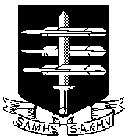 The South African
The South African
On a recent trip to Vancouver, Canada, the author went off to visit Vancouver Island.
The island is surprising large, being 456km long, 100km at its widest point with a total area of 32,100km2. It is the largest by area and the most populous of the islands along the west coast of the Americas. The capital of British Columbia, Victoria, is on the island and has some beautiful Victorian buildings.
The southern part of Vancouver Island and some of the nearby Gulf Islands are the only parts of British Columbia or Western Canada that lie south of the 49th parallel. The 49th parallel is the boundary between the United States and Canada. The Canadian Ladysmith lies on the 49th parallel. It is built on the hillside overlooking Ladysmith Harbour.
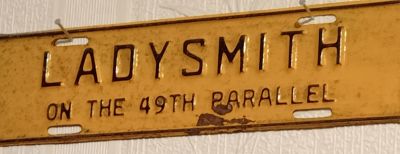
Indigenous peoples inhabited Vancouver Island for thousands of years, before the arrival of Spanish and British naval expeditions in the late 18th century.
The Spanish and British conjointly named it Quadra’s and Vancouver’s Island in commemoration of the negotiations in 1792 between the Spanish commander of Fort San Miguel in Nootka Sound, Juan Francisco de la Bodega y Quadra, and British naval Captain George Vancouver. It is one of several North American locations named after George Vancouver, who explored the Pacific Northwest from 1791 to 1794 .
It is separated from the mainland of British Columbia by the Johnstone Strait on the north, Charlotte Strait to northeast, and by the Strait of Georgia on the southeast. These, together with the Strait of Juan de Fuca along its southwest, separate it from the United States. West of the island is the Pacific Ocean - and having experienced 15 hours of non-stop flying over water from Brisbane to Vancouver, this author knows just how huge the Pacific Ocean is!
The Vancouver Island Ranges run most of the length of the island, dividing it into a wet and rugged west coast and a drier, more rolling east coast.
Ladysmith, one of the oldest settlements on Vancouver island, and originally known as Oyster Harbour, was established in 1899 by James Dunsmuir, son of the island's prosperous coal-mining family. In 1897 the seams at their Nanaimo coal mine to the north of Ladysmith became depleted, and Dunsmuir moved the mining operation southwards to new seams at Extension Mine.
He decided to establish a new settlement, to be a recreation and dormitory complex for his miners and their families, above the coal wharves at Oyster Harbour. The miners dismantled their Nanaimo homes, put them on railway cars and moved them to the new location. Hotels, churches and business buildings were also moved. Many of these building exist in the town to this day.
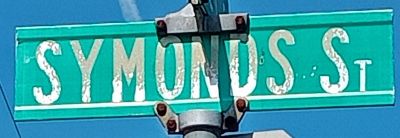
But, how did Oyster Harbour become Ladysmith?
When Dunsmuir received word on 1 March 1900, that the British forces had finally relieved the besieged town of Ladysmith, South Africa, he decided to name his new town Ladysmith. All the streets crossing First Avenue were named after British Generals who served in the Anglo Boer War.
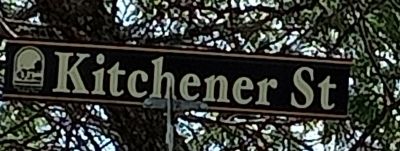
Naturally the author drove around the whole town and photographed all the street names and signs with Ladysmith connections.

The town grew quickly and prospered. By 1911 it had a population of 3 300. Its economy was based on coal mining, logging and timber and the farming of oysters, and a railway station was built in 1901.
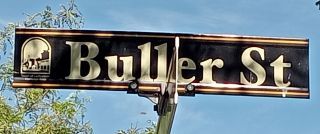
In September 1912 the Vancouver Island coal strike began, with violent riots in August 1913. The local militia was called out, but the strike only ended with the outbreak of the First World War.
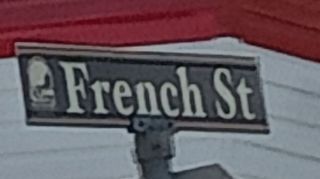
The history of the town is depicted in the local museum. An exhibit on the "Ladies of Ladysmith" starts with Lady Maria Juana Smith, wife of Sir Harry Smith - the same after whom "our" Ladysmith is named.

The Museum in Ladysmith B.C.
This colour photograph was on the inside front cover
of the issue,
while the street names were in black and white on the inside pages.
On a visit to the museum, the volunteer staff member on duty was very interested, when told that the author had been born in Ladysmith South Africa. He admitted to an interest in the connections with Ladysmith South Africa but had never visited our country.
Footnote: Not only is there Ladysmith, but also a small island, east of Nanaimo, named Newcastle.
Sub-Ed’s other footnote - for the (gentle)men: Pamela Anderson of TV show Baywatch fame/notoriety was born in Ladysmith B.C.
References:
Sources: wikipedia - Ladysmith,_British_Columbia
Ladysmith Museum personal visit and the museum brochure.
About the Author
Pam is the recently retired founding director of the Talana Museum in Dundee.
She is also a registered Tour Guide whose annual ghost walks up Talana Hill after the Museum's annual Memorial service have earned international interest.
Return to Journal Index OR Society's Home page
South African Military History Society / scribe@samilitaryhistory.org